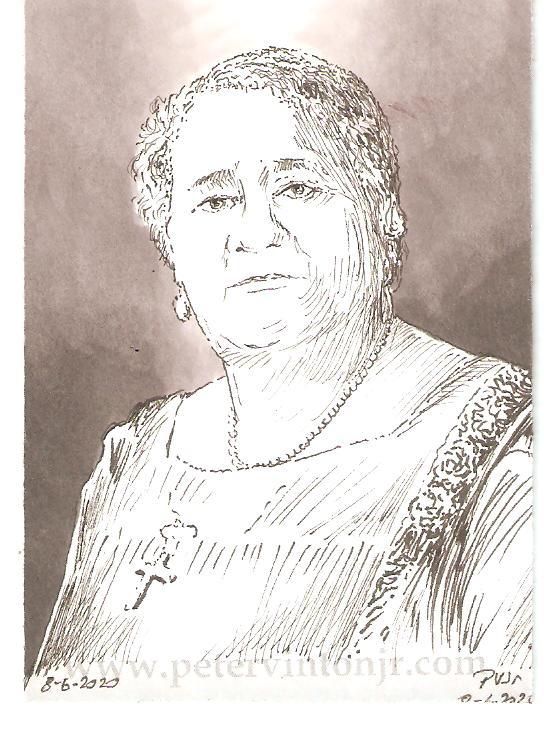
An ongoing illustrative history study
This piece originally posted 9/13/2020
Prelude | 33 | 34 | 35 | 36 | 37 | 38 | 39 | 40 | 41 | Email |
|---|
"No person is your friend who demands your silence, or denies your right to grow."
Born to formerly-enslaved parents at the height of the Civil War in 1864 Richmond, Maggie Lena Walker joined a fraternal benevolent organization --the Independent Order of St. Luke (IOSL). The self-help organization promoted humanitarian community causes and ministered to the needy. Walker became inextricably linked to IOSL, assuming various leadership roles, among them creating and publishing its newspaper. She became its national leader in 1899, and from there she ultimately founded the St. Luke Penny Savings Bank; the first woman --of ANY race-- to charter a bank in the United States. In the rigidly-segregated South, such an accomplishment was unheard of, but the bank quickly became a powerful representation of self-help principles. The Penny Savings Bank not only attracted adults (primarily black women), but Walker also worked to appeal to children by encouraging them to save their money. Parallel to the bank and the newspaper, Walker also founded a department store, St. Luke Emporium. Among her employees Walker encouraged a strict attitude of thrift, respectability, and punctuality. All of these endeavors maintained a focus on community advancement rather than individual success.
Read more about the history of St. Luke's Penny Savings Bank at: https://www.nps.gov/mawa/the-st-luke-penny-savings-bank.htm
In 1915, Walker's husband was tragically killed by her son, who had taken his father for a burglar. Her husband's passing left her in charge of a large estate. She continued working for the Order of St. Luke's but also held leadership positions in other civic organizations, including National Association of Colored Women (NACW). A number of ailments later in life confined her to a wheelchair, but Walker continued to push for greater rights and recognition for people of color; in her final years she was known throughout Richmond as The Lame Lioness.
Next page - Lesson 38: Mary Ann Shadd Cary